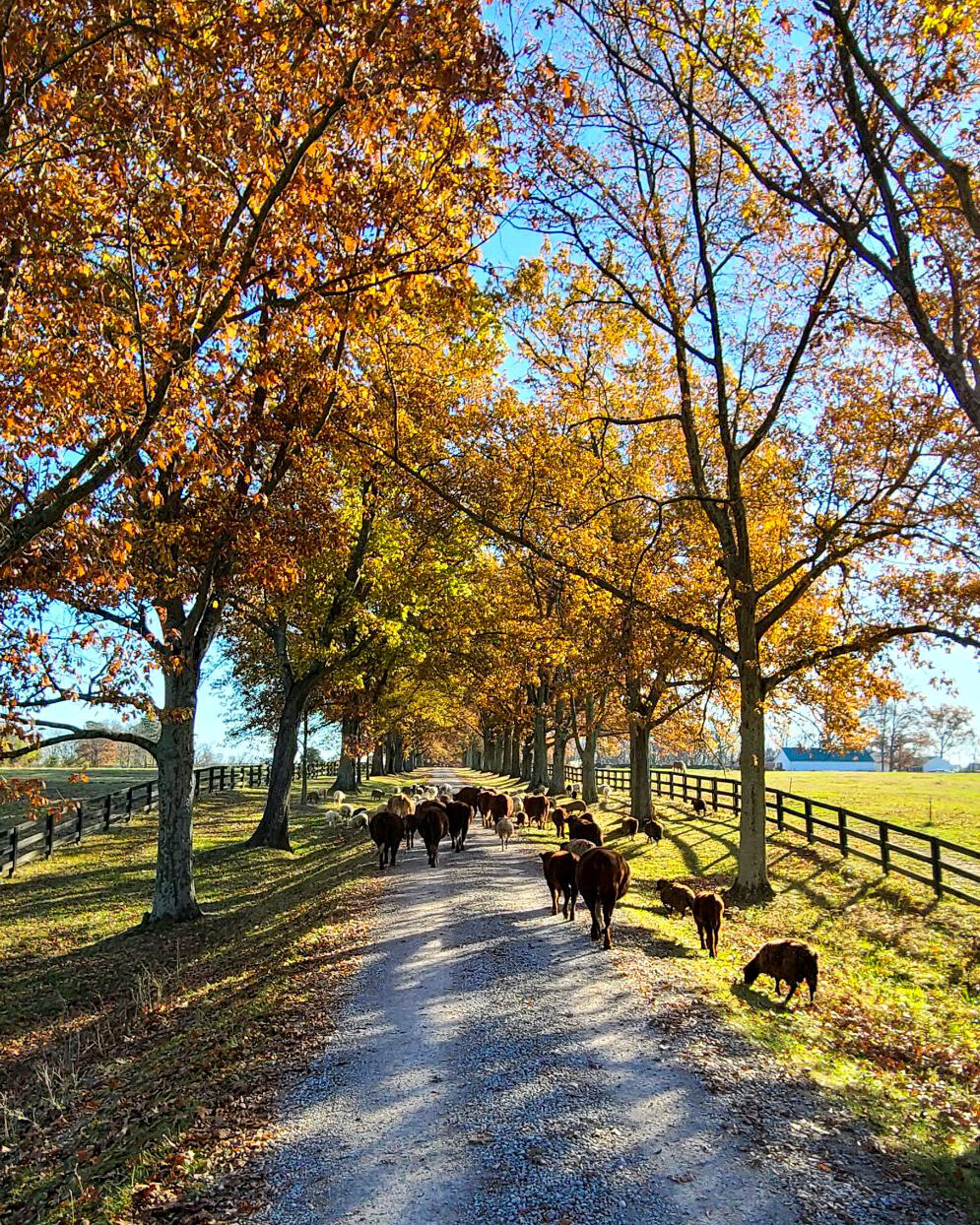Announcements
On the Move: Why We Practice Intensive Rotational Grazing at Turner Farm
Our cows and sheep are always on the move at Turner Farm. It’s a practice known as intensive rotational grazing, or management intensive grazing, and it requires a lot of time, energy and labor. Keep reading to find out why we still do it anyways.
Our cows and sheep are always on the move at Turner Farm. And each move is highly choreographed by Danny, our Livestock & Pastures Manager, and his team. It’s not as simple as opening a gate. There is a great deal of planning that goes on behind the scenes.
The team aims to move the group of animals onto a piece of pasture only just before it goes to seed. The goal is to achieve the deepest root growth possible without compromising the quality of the feed for the animals, which is key to carbon sequestration. Once the rotation is designed, the actual moving can begin.
First the team has to set up the new fence. Then the sheep need to be guided, and once one makes the move, the rest will flock to join it. The cows usually saunter in behind them. The team cleans up the old fence, and then the move is finally complete. Until the next day, or sometimes later in the same day, when it’s time to move the flerd again (flerd being how we refer to the flock of sheep and herd of cattle we move as one group).
This practice is known as intensive rotational grazing (or management intensive grazing), and while it does require a lot of labor on our end to make it happen, we believe it is well worth the benefits. Part of our mission at Turner Farm is to demonstrate that local, organic, low-impact food production grows healthy communities and healthy ecosystems, and intensive rotational grazing very much contributes to the health and vitality of both:
Healthy Community: Intensive rotational grazing gives our animals constant access to fresh pasture to eat, plus regular exercise, which keeps them healthy. And what’s better for their quality of life is ultimately better for you, with “grass-fed beef and butter containing higher concentrations of key nutrients, antioxidants, vitamins, and beneficial fats than their grain-fed counterparts,” according to study conducted by Greenacres Foundation in partnership with Michigan State University. (It should be noted that these nutritional benefits apply to cows raised outdoors, in the open air and on pasture their entire lives, which is not the same as “grass-finished,” a label that could still be applied to a cow fed primarily grain for most of its life, often times from the confines of a feedlot.)
Healthy Ecosystem: Part of our mission at Turner Farm is to demonstrate that local, organic, low-impact food production grows healthy communities and healthy ecosystems, and intensive rotational grazing very much contributes to that. As cows and sheep mow down the grasses, legumes and forbs in our pastures by eating them, the plants’ root systems expand underground, improving water retention, reducing flooding and sequestering carbon. Plus, the hooves of the animals press seeds into the ground, further continuing the circle of life. According to a life cycle assessment conducted at White Oak Pastures, beef raised using regenerative grazing methods had “a carbon footprint 111% lower than a conventional US beef system.
This method of regenerative land management is also why our meats have a higher price point. When you buy Turner Farm meats, grass-fed beef and lamb, and pasture-raised pork, chicken and eggs, you’re paying for the animals’ quality of life, as well as a fair wage for the farmers who care for them.
Our meat is available exclusively at our Farm Market. See a full list of what’s in stock right now at turnerfarm.org/market.


